
Review on 🎧 Renewed Apple AirPods Max - Space Gray: Superior Sound and Style Refreshed by Manur Bartov

Are AirPods Max worth the money? My personal experience of using.
How many people have so many opinions. What are these headphones really capable of and are they worth the money? Learn more about my personal experience with AirPods Max.
I want to share the experience of one of the most unexpected and controversial, but undoubtedly interesting products from Apple. For two whole weeks I tested the first full-size and at the same time wireless headphones from Apple - AirPods Max. During testing, I spent quite a lot of time with this device from the "apple" giant - I listened to music, watched movies, talked on the phone ... I want to note two important details right away:
I am a fan of the brainchild of Steve Jobs! The way the products work, causes only respect!
Whatever opinion I have about these headphones is my personal subjective opinion (for each user they will sound differently, since the sound depends on the music, its quality, equalizer settings and much more) and of course is whether the listener is a basshead like me or not)
Before buying, I strongly recommend to test this device in the store and understand how they will sound specifically for you! This is very important, and they are presented in official stores and it will not be difficult to devote 15-20 minutes to listening!
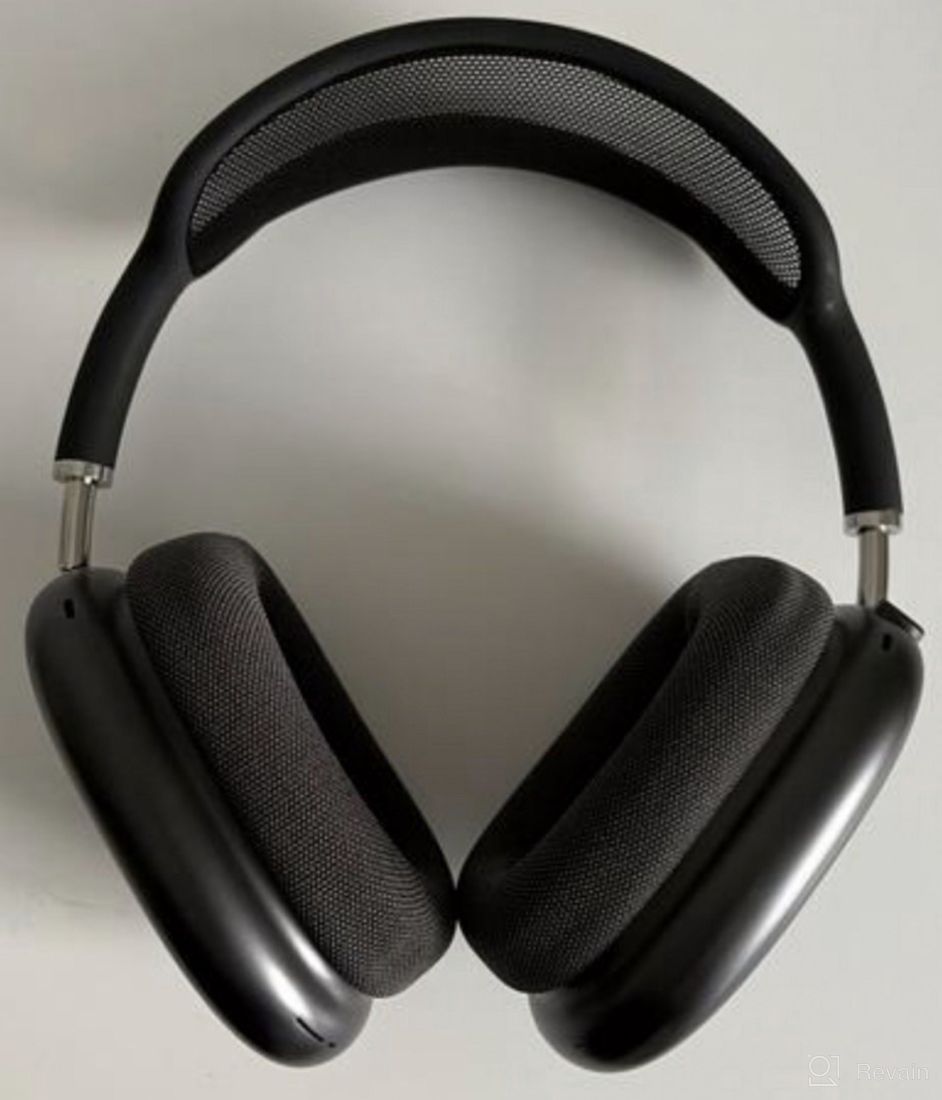
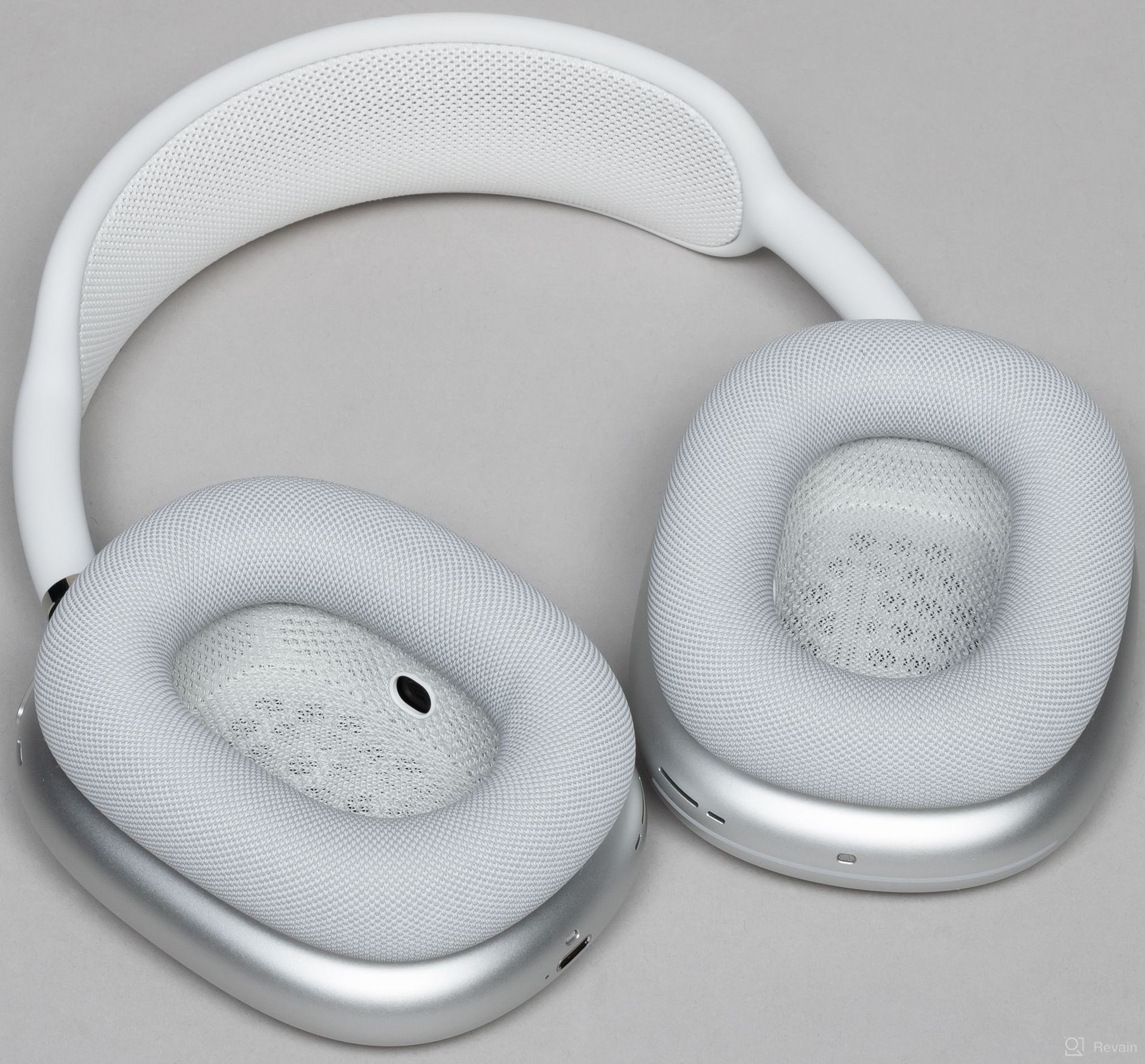
To begin with, I will list the general points, summing up the most important. AirPods Max have a 40mm dynamic driver developed by Apple. Two Apple H1 chips (one in each earbud) are responsible for computing operations. Each chip has 10 audio processing cores capable of performing 9 billion operations per second. The chips power features such as adaptive EQ, active noise cancellation, transparent mode, and spatial audio. Just the technology of the future right now on the ears)
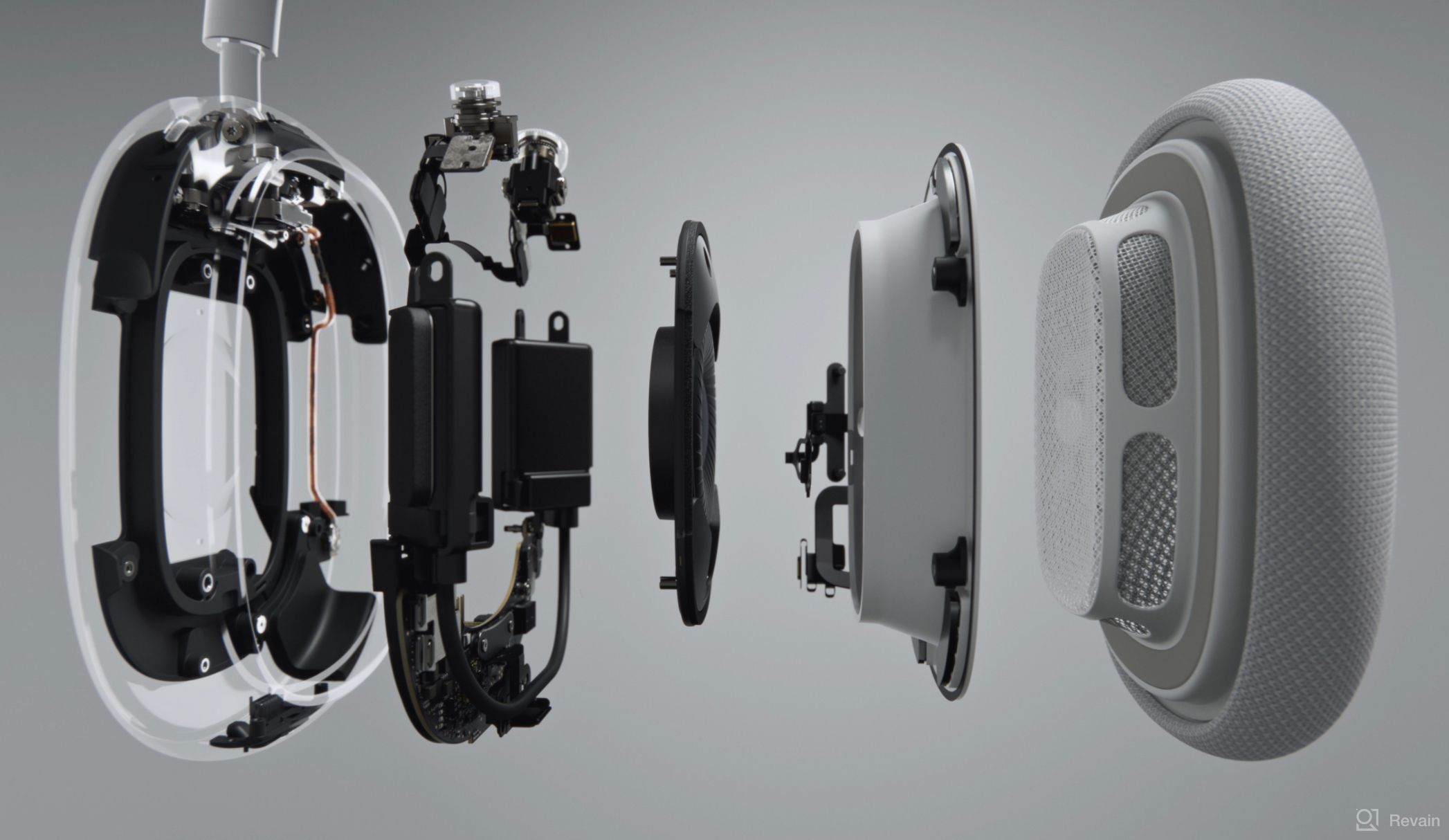
Equipment
The headphones themselves and a protective case, not a case, as in most cases in the old fashioned way, but a fashionable case)
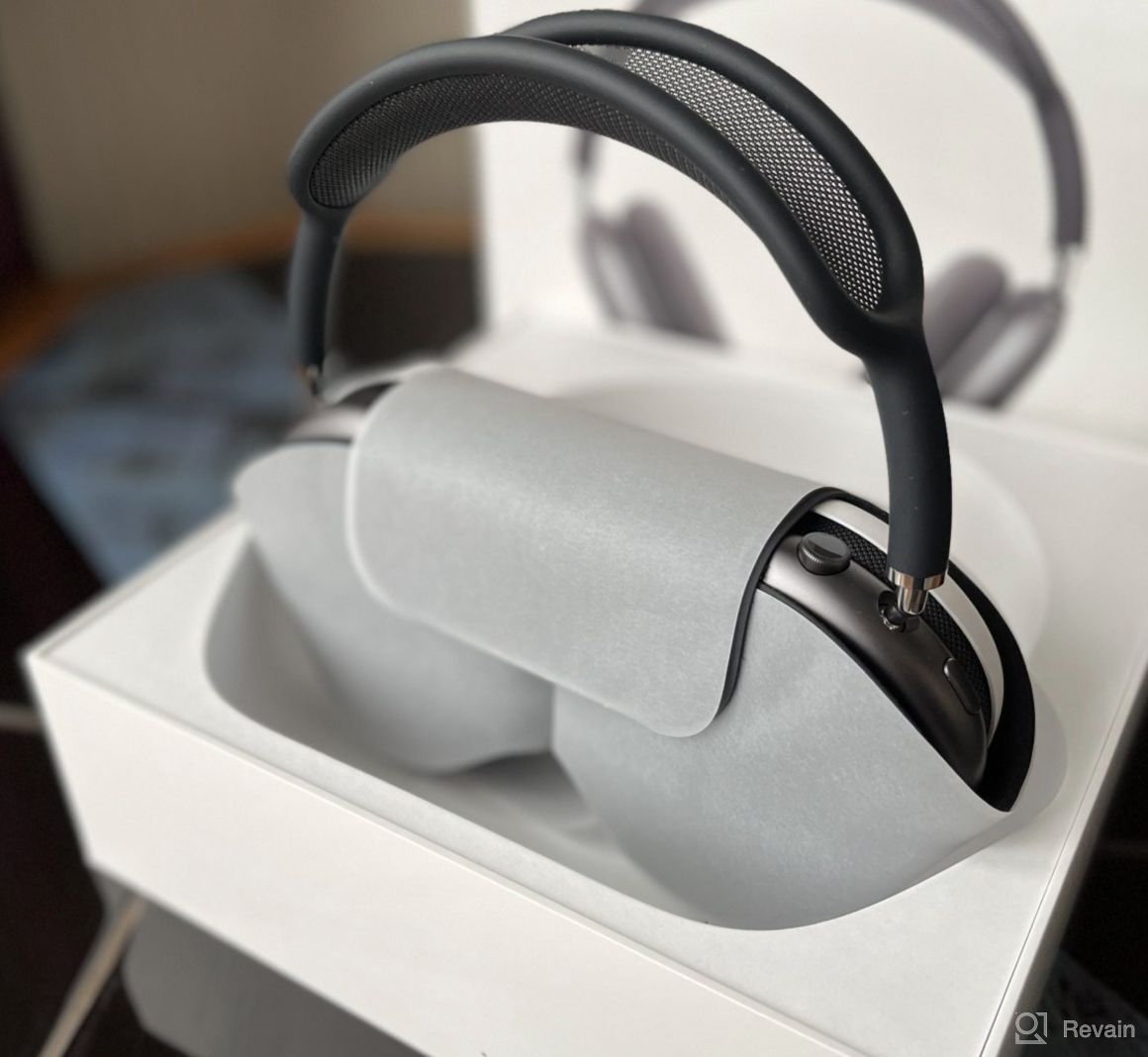
About every Apple product, you can say that it is beautiful. AirPods Max are no exception - they look amazing, have incredible ergonomics! The build quality is also great! It can be seen that premium materials were used when creating the headphones:
Headband - breathable mesh fabric;
Headphones are telescopic, made of stainless steel;
The outer part of the cups is made of anodized aluminum;
Ear pads - memory foam
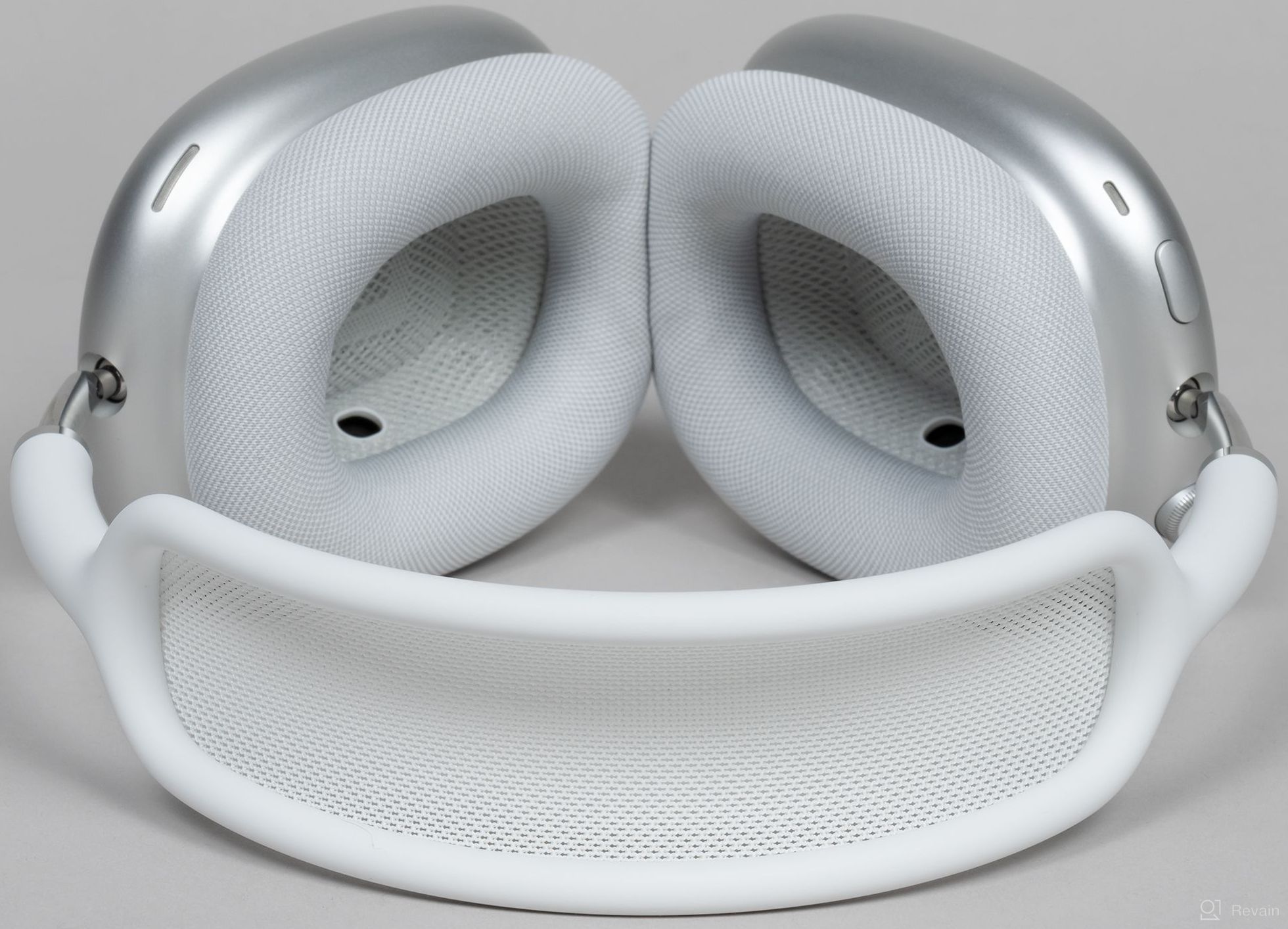
Everything that I have listed refers to the undoubted pluses - the headphones look really amazing and expensive, they are very beautiful and thought out to the smallest detail!
Now the minus - since many components are made of metal, this, for obvious reasons, affects the weight. Despite the fact that the fit of the headphones on the head is amazing, the shape of the cups is comfortable, the ear cushions are really cool, but the weight of 384 grams is felt on the head! After Bowers & Wilkins PX7 at 310 grams, even the extra 70 grams turns out to be noticeable)
To be honest, I doubt that during the design of these headphones, they thought about how they would run in them. I think AirPods Max does not involve active sports. Most likely these headphones are a device for listening to music at home and in the office, Google meeting or zoom and watching a movie in flight. I'm sure AirPods Max would be great for a plane or train, but not for running...
And of course, scratches on metal are also a minus ( Whatever one may say, life is life, and during carrying it often happens that you hit something, and here on an expensive beautiful gadget there is a small scratch that you constantly look at)
I have the same issue with my Macbook.
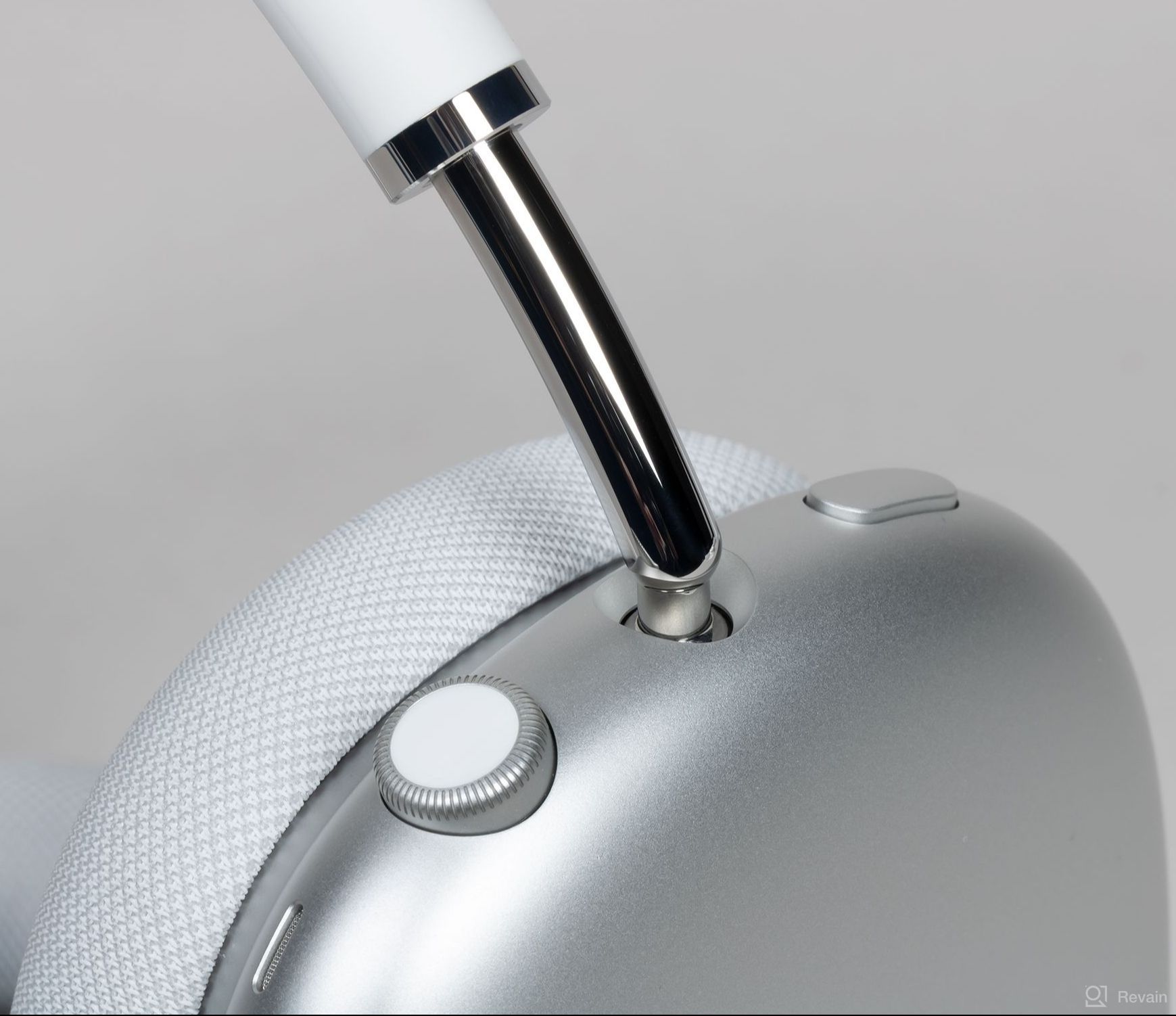
There are two controls on the AirPods Max case - this is a soundproofing mode switch with an amazing soft move and a larger Digital Crown wheel familiar to us from Apple Watch and without vibration feedback, but with a very smooth move. As I said, the wheel has no vibration feedback, when you adjust the volume, you hear a slight quiet click, which is almost inaudible when listening to music. Looking ahead, I want to say that the sound can be adjusted very accurately (due to a small adjustment step). In general, I really like adjusting the sound with a mechanical wheel, rather than touch gestures - it’s easier to do it on the go and it turns out more accurate, although the location of the Digital Crown itself causes a lot of controversy. Usually on headphones, this wheel is located at the bottom so that you don’t have to reach far to reach it. Right there it is located on top and you also need to get used to it, but Apple just likes to do it differently and say that it’s actually “it’s more convenient”. To be honest, I can’t say for one hundred percent now that it’s really comfortable, because the stretch is a little higher than before and a little higher than on other headphones. The ear pads are removable, they are attached to the body with powerful magnets and, if necessary, you can buy new ones. There is no off button on the headphones, just like regular AirPods. They only turn off when you place them in the smart case (included).
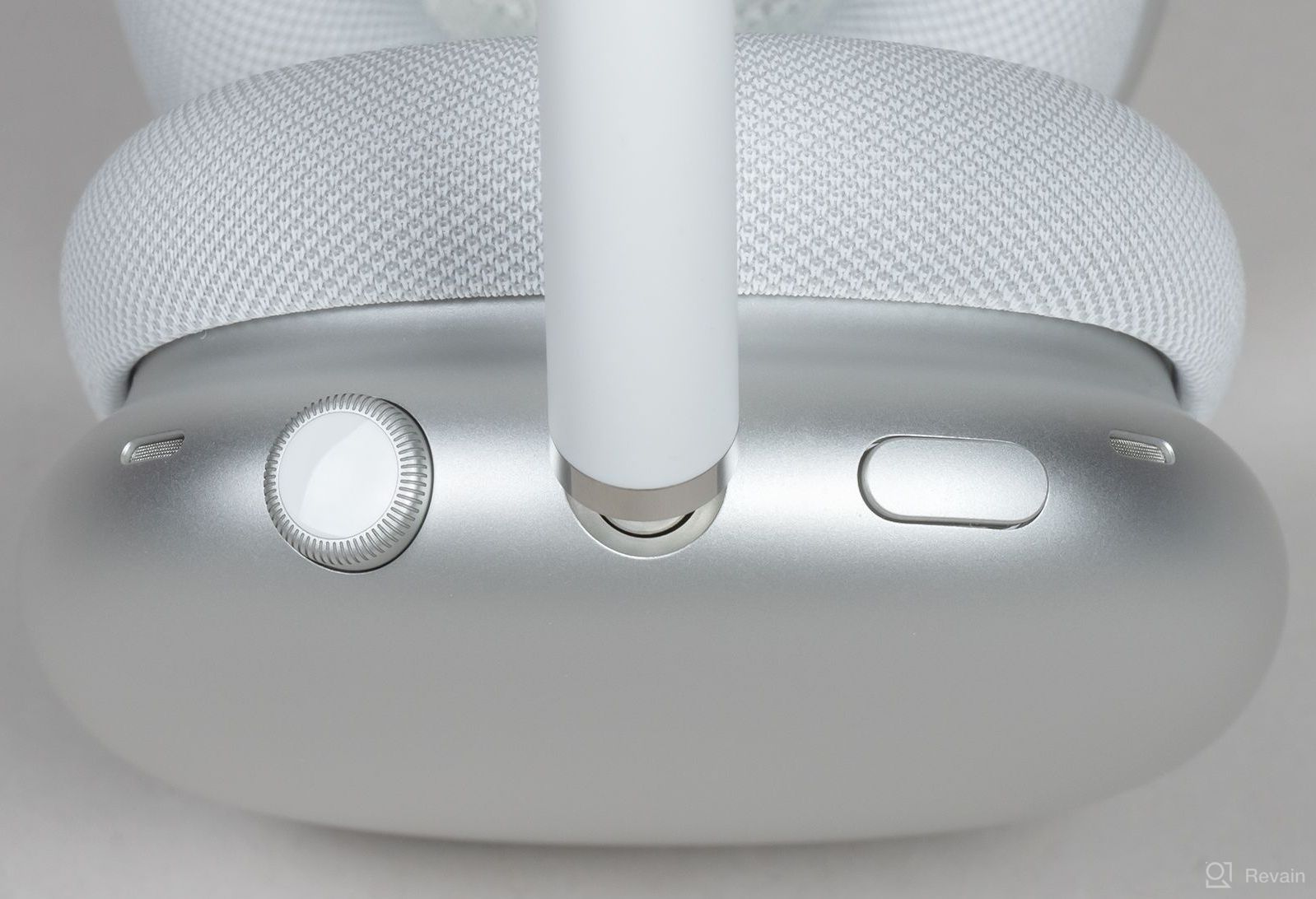
Control
At the time of the first connection of the headphones to the smartphone, they, like other Apple gadgets, the smartphone independently finds them and offers to connect. Everything is very beautifully animated, it connects quickly, conveniently, and, which I really liked, during the first turn on, you are shown the AirPods Max control functions, so you don’t have to guess when managing. Although there is nothing complicated there - the big button, as I said, switches the soundproofing modes between the usual active noise reduction and transparent mode, and turning the Digital Crown is responsible for the playback volume, combinations of pressing the wheel are responsible for the pause functions and switching tracks. Noise reduction features are configurable on all Apple devices, including the MacBook. In the settings, you can select sound modes that you will switch by pressing a button. Here you can choose the direction of rotation of the Digital Crown to adjust the volume. During incoming messages on your smartphone, Siri reads them and prompts you to immediately answer them (and with your voice). It's amazing, handy. The headphones also have a spatial audio function - this means when the headphones are on your head and the smartphone is in front of you, you can turn your head left and right, the sound will go on, but you will hear it from the side of the smartphone, that is, this is not stereo, but something more! True, this function only works with native sound sources on the iPhone.
Sound
As I said, AirPods Max play differently on all heads and the adaptive equalizer is to blame for everything, which at the moment can not be turned off or adjusted, you can not adjust the intensity of its work. So I repeat - before buying these headphones, you definitely need to listen and draw conclusions specifically for yourself!
Before proceeding directly to the presentation of impressions of the sound quality, I will tell you on which tracks I tested it. The sound source was a MacBook Pro 13”, a Vox player that supports FLAC 24bit 96kHz playback. It was decided to make a selection of demonstrative recordings of different styles: electronics with a deep beat and vocals, hard rock with vocals, jazz, symphonic classics. All tracks were in 24-bit FLAC, and three of them were official digital releases, and one was a high-quality rip from the vinyl of the first press. All recordings were made in the last three years, except for the remastered Led Zeppelin track.
And here are my listening experiences.
Massive Attack Come Near Me
The second track from off-album single Massive Attack is interesting for its deep rich beat and charismatic, husky male vocals of Ghostpoet. Headphones pleased in the first place with how convex and expressive this vocal sounded. All the smallest nuances, wheezing and creaking of the voice were heard, which, in fact, make up a considerable part of the charm of the performance. As for the beat, it is voluminous and "pumping". Maybe there is even too much bass here, but for trip-hop it’s just right. By the way, there are even more bass headphones - the same Bowers & Wilkins. So Apple here decided to please both yours and ours - both those who love moderate bass and fans of "rocking" sound. Recording - 24 bits 192 kHz, bitrate - 5182 Kbps, rip from the single pressing of the single on 180-gram vinyl.
Led Zeppelin “Over the Hills And Far Away”
The second number from the album "Houses Of The Holy" begins with a long acoustic guitar intro, then Robert Plant sings the most delicate melody, and a minute and a half after the start, drums and bass guitar suddenly come in sharply, and the style changes to aggressive hard rock. Thus, in one composition, we have both Led Zeppelin's stylistic roles in all their glory, and, in addition, they replace each other with almost no transition. AirPods Max demonstrated transparency and sufficient sound detail here. But most importantly, it bribed how realistic and nuanced Jimmy Page's guitar was - as if he were playing right next to him.
This recording is from the Super Deluxe series of reissues of Led Zeppelin albums directed by Jimmy Page. Each box includes a card with a code to download tracks in 24bit 96kHz. The bitrate in this case is 3146 Kbps.
Keith Jarrett, Gary Peacock, Jack DeJohnette "Bouncin' With Bud" (Live)
A live recording of the great jazz trio Keith Jarrett was released as an album “After the Fall” in 2018 and is available for purchase in 24 bits, but with a sampling rate of only 44.1 kHz and not the highest bit rate of 1320 Kbps. However, the sound quality is superb, and the headphones here show how they handle a double bass line that doesn't turn into mush and retains sufficient intelligibility, as well as passing hi-hat cymbals. They are not at all annoying, as it happens on lower quality devices, and at the same time they are not lost.
Gustav Mahler. Symphony No. 6 "Tragic", IV movement (performers - NHK Symphony Orchestra, conductor Paavo Järvi)
One of the most complex and revealing tracks: the finale of Mahler's Sixth Symphony. In the first bars, the violins play against the backdrop of harp arpeggios, and then the tutti falls sharply, and the brass enters. Headphones do not give up here either, creating sufficient depth of the stage and providing a detailed presentation and breeding in space of each group of instruments. The dynamic range is also good: from pianissimo to fortissimo, sometimes with almost no transition.
General impressions of the sound: not to say that the AirPods Max shocked and gave some previously unknown impressions with their sound (here I recall how audiophiles often like to talk about acoustics for hundreds of thousands), but I admit that this is a very good, high-quality sound. Headphones are suitable for listening to music of any genre, they do not have a clear sharpening for any one direction. And even the emphasis on bass here, although there is, is moderate. In general, a very balanced sound.
Inside each earphone, in addition to an optical sensor responsible for pausing when removed from the head, there are microphones that analyze the sound inside the earcup, and the Apple H1 processor built into AirPods Max sets up an adaptive equalizer that cannot be turned off. Many people say that these headphones have poor bass transmission, it is true, bassheads need more bass) The frequencies, in my opinion, are balanced, not overloaded and detailed. At the same time, there is bass here, it cannot be said that it is not at all, but they do not have excessive power. I listened to different music, and in all cases, the headphones played differently. This is an amazing feeling, because I did not change anything in the settings, the sound is different, it changes depending on the content! It is very cool!
I also want to say about active noise cancellation, which is quite active. Sorry for the tautology, but if you're wearing headphones, don't turn on that active noise cancellation! Only as needed, for some reason I immediately have a headache, as if pressure (
At the same time, we must pay tribute, it works - it really cuts off the listener from the outside world! Moreover, it cuts off not only background noise, but voices are cut off pretty well too!
Conclusion
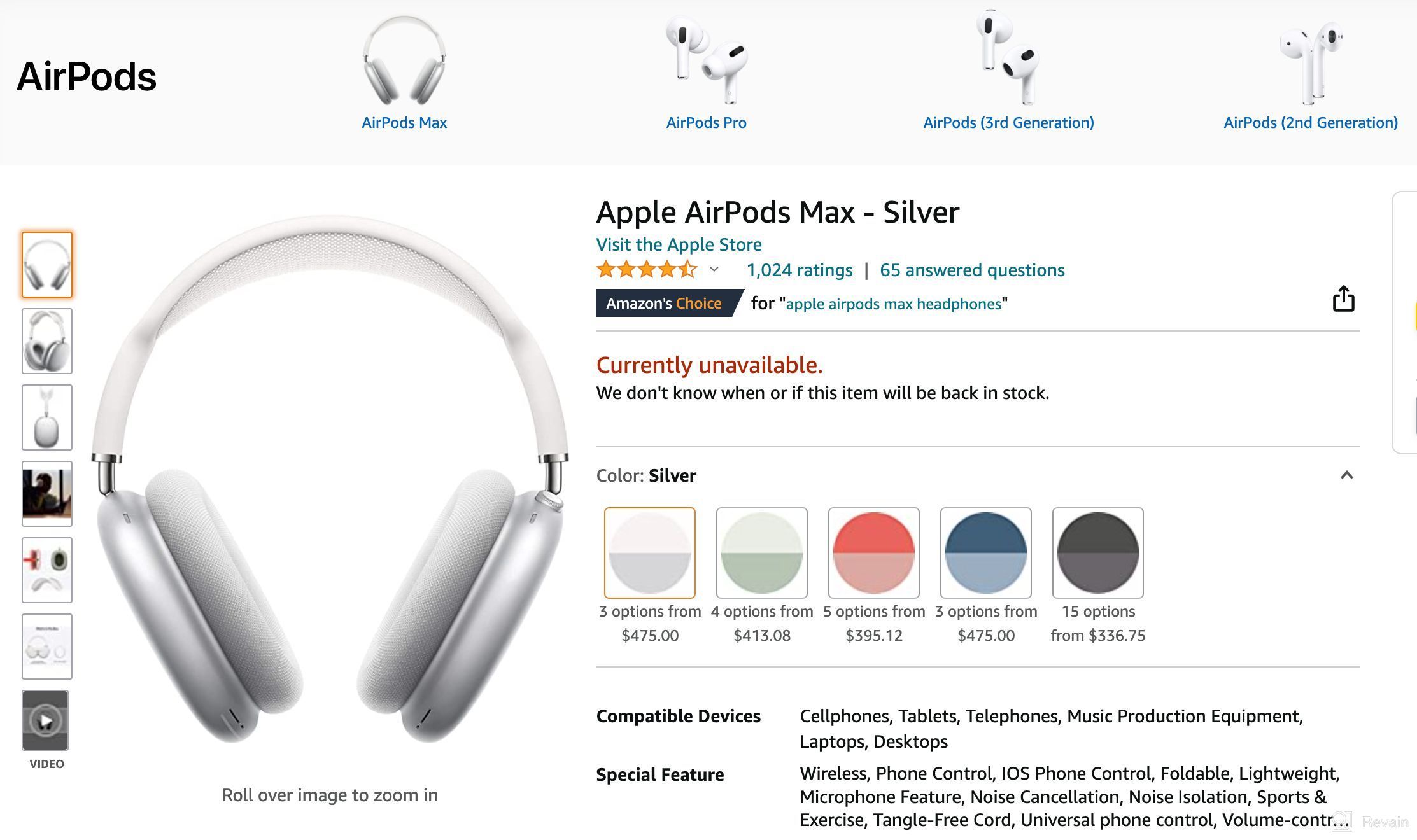
How many discussions and disputes have been around AirPods Max since Apple announced them! There were so many screams that their sound is bad, the design is terrible, and the price is unreasonably high! As it turned out, the sound here is decent, and the design is at least comfortable and functional, although visually controversial, especially when it comes to the case and scratched metal. As for the price, you need to understand what it consists of in this case. This is not only the sound itself, but also the quality of materials (the highest), and the absence of wires, and interaction with the Apple ecosystem, and noise isolation, and additional features, whether it be Siri or spatial audio.
I admit that you can find other $ 450 Bluetooth headphones that will sound better in some way - and I’m even ready to believe that there are audiophile units who can feel this difference.
And whether to pay extra for design, autonomy, smart "stuffing" and other bonuses listed above - everyone decides for himself. One way or another, this product is bright, noticeable, many of its features will soon become the de facto standard, at least for the mass market. And that's probably a good thing.
Read my review on Bowers&Wilkins PX7 full-size wireless headphones here!!!!!
- premium materials were used when creating the headphones
- convenient control
- Sound
- design
- smart "stuffing"
- price
- scratches on metal
New products
Comments (0)
Top products in 📷 Camera & Photo Accessories
Another interesting products

Canon Nikon Sony Panasonic FujiFilm Olympus Pentax DSLR Camera Bag, Evecase Large Vintage Canvas Messenger SLR Shoulder Strap Case - Gray

45 Review

A Durable And Protective CaseSack For Bose QuietComfort And SoundLink Headphones

41 Review

Soft Silicone AirPods Case Cover With Visible LED - Compatible With AirPod 2/1 Cases, Keychain Accessory Included - Ideal For Men, Women, Girls, And Boys - Light Pink

37 Review
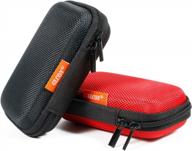
Protect Your Earbuds On-The-Go With Small And Portable EVA Case - Perfect For Airpods, USB Drives, Cables And More!

34 Review







